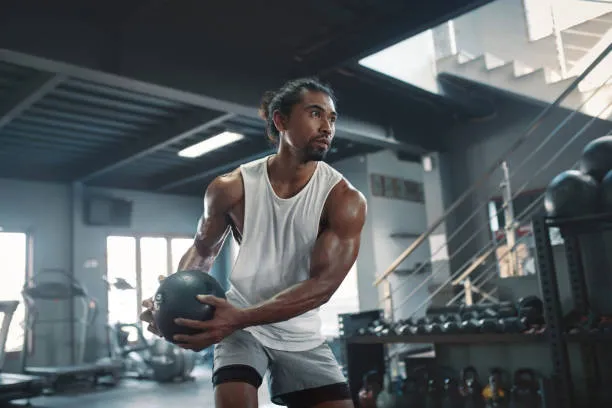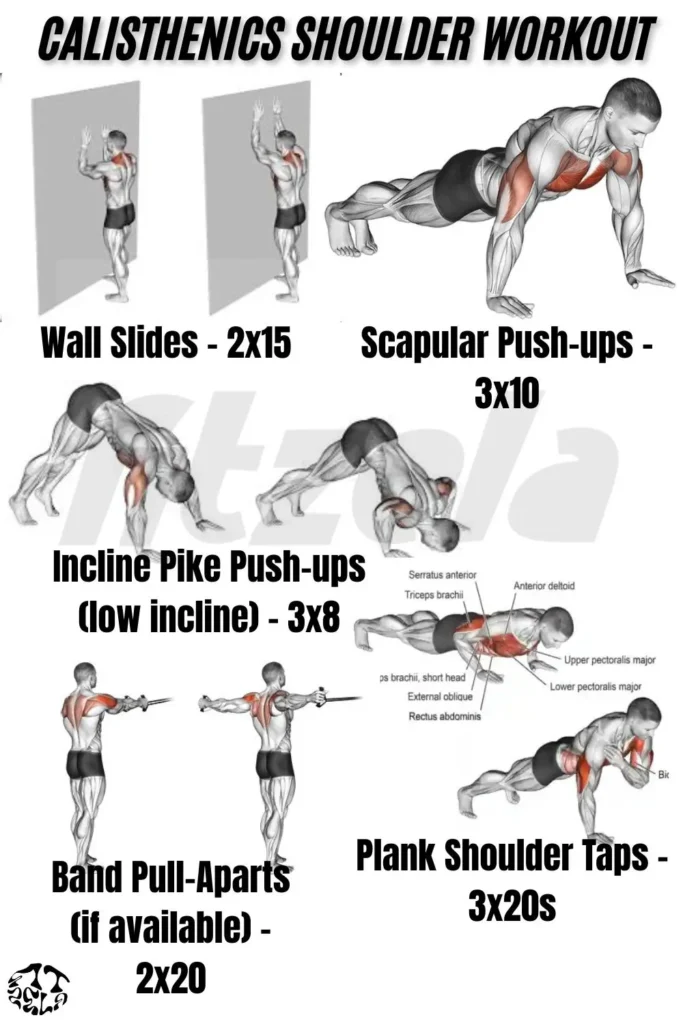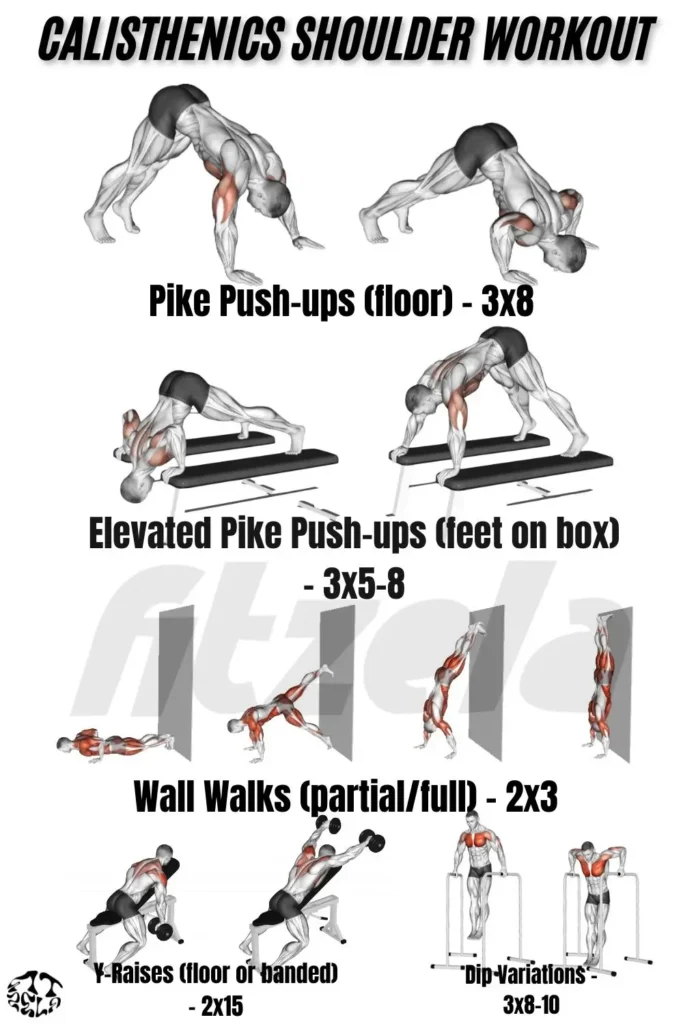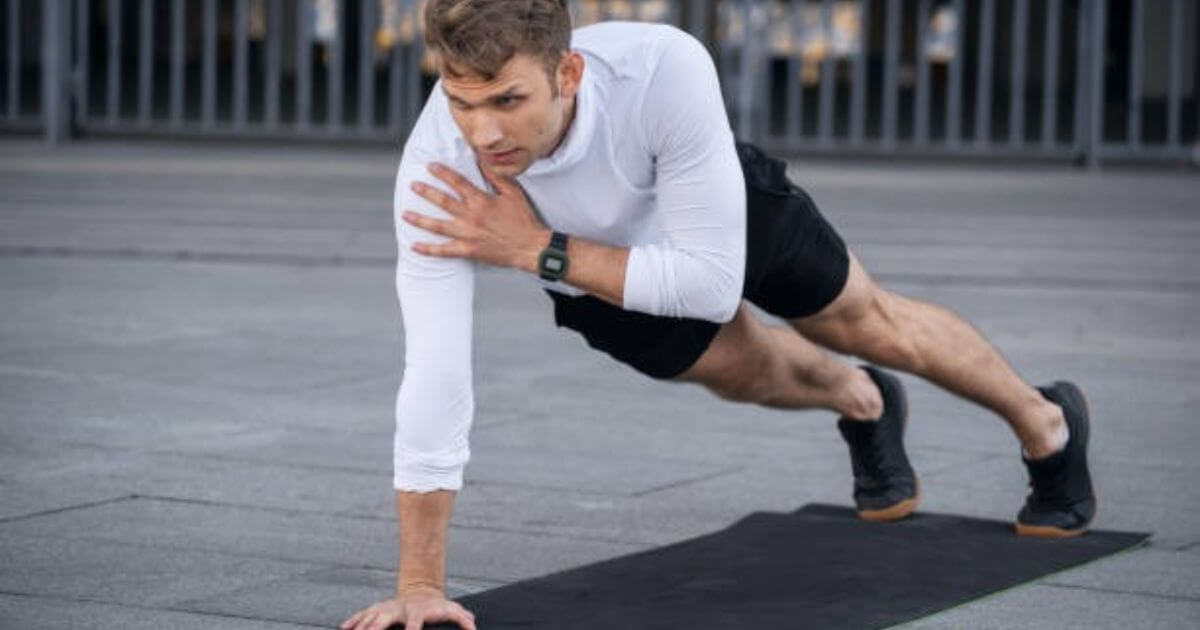The Ultimate Calisthenics Shoulder Workout: Build Strength, Size & Health
Strong, mobile shoulders are more than just aesthetic— they’re foundational for functional fitness, athletic performance, and long-term joint health. Whether you’re pushing yourself up into a handstand or simply lifting groceries, your shoulders play a critical role. But here’s the twist: you don’t need heavy weights to build impressive, powerful shoulders. Enter the calisthenics shoulder workout.
Why choose bodyweight shoulder exercises? Calisthenics builds relative strength, enhances core and joint stability, and unlocks impressive skills like the Handstand Push-Up (HSPU) with minimal equipment. This guide will walk you through the essential anatomy, safety principles, level-based routines, and targeted exercises to help you develop bulletproof shoulders.
What You’ll Learn:
- Shoulder anatomy simplified
- Key safety rules
- Beginner to advanced workouts
- Progression strategies
- The complete calisthenics shoulder exercise library
- Mobility & injury-prevention tips
Real talk: Calisthenics will sculpt strong, mobile shoulders. While size gains may not match heavy lifting, the strength and skill carryover are unmatched.
Table of Contents
Understanding Your Shoulders (Essential Anatomy for Smart Training)

Deltoids
Your delts have three heads:
- Anterior (front): activated during push-ups, dips, pike push-ups.
- Lateral (side): tough to hit directly with bodyweight, slightly activated in handstands.
- Posterior (rear): engaged during bodyweight rows, band face pulls.
Rotator Cuff
This muscle group stabilizes your shoulder joint. It’s not about power; it’s about control and injury prevention.
Scapula (Shoulder Blades)
Proper shoulder function depends on scapular motion. Learn to control retraction, protraction, elevation, and depression to avoid injury and maximize performance.
Safety First! Key Principles for Healthy Calisthenics Shoulder Training
Prioritize Proper Form & Scapular Movement
Never “muscle through” reps. Always control movement and ensure your shoulder blades are moving properly.
Warm-Up is Non-Negotiable
Prepping your joints is essential. (Jump to our warm-up guide below!)
Listen to Your Body – Avoid Pain
Sharp pain = stop. Fatigue = okay. Be aware of shoulder impingement signs (e.g., pinching sensation).
Progressive Overload (Applied Safely)
Increase difficulty via:
- Leverage: Elevate feet, adjust angles.
- Range of motion: Add deficit.
- Volume/tempo: More reps, slower tempo.
- Instability: Try rings or single-arm variations.
Balance Pushing & Pulling
Shoulder health demands posterior chain work. Don’t skip rows or rear delt training!
Find Your Level: Shoulder Strength Assessment
Use these benchmarks:
| Test | Result | Recommended Level |
|---|---|---|
| 10 clean push-ups | Yes | Beginner/Intermediate |
| 30s plank hold | Yes | Beginner/Intermediate |
| Pike push-up (floor) | Comfortable | Intermediate/Advanced |
Beginner Calisthenics Shoulder Workout
Goal:
Build stability, strengthen the rotator cuff, and master pressing angles.
Routine (2x/week):
- Wall Slides – 2×15
- Scapular Push-ups – 3×10
- Incline Pike Push-ups (low incline) – 3×8
- Plank Shoulder Taps – 3x20s
- Band Pull-Aparts (if available) – 2×20

Progression:
When Incline Pike Push-ups feel easy, lower the incline or move to floor Pike Push-ups.
Intermediate Calisthenics Shoulder Workout
Goal:
Master Pike Push-ups and start HSPU progression.
Routine (1-2x/week):
- Pike Push-ups (floor) – 3×8
- Elevated Pike Push-ups (feet on box) – 3×5-8
- Wall Walks (partial/full) – 2×3
- Y-Raises (floor or banded) – 2×15
- Dip Variations – 3×8-10

Progression:
Progress to wall-assisted HSPU negatives, increase pike push-up elevation.
Advanced Calisthenics Shoulder Workout
Goal:
Develop overhead pressing power and control. Master HSPUs.
Routine (1-2x/week):
- Wall HSPUs – 3×3-5 (depth-controlled)
- Freestanding HSPU Practice – 10-15 mins
- Pseudo Planche Push-ups – 3×6-8
- Elevated PPPUs – 2×5
- Tuck Planche Holds – 3x10s
- Ring Dips (optional) – 3×8
Programming Tips:
Include deloads, periodization, and skill-specific days.
The Ultimate Calisthenics Shoulder Exercise Library
| Exercise | Primary Muscles | Common Mistakes | Regression | Progression |
| Pike Push-up | Anterior deltoid, triceps | Hips too low, elbow flare | Incline version | Elevated Pike Push-up |
| Wall Handstand Push-up | All delts, triceps | Arching back, short ROM | Negatives | Full depth, freestanding |
| Scapular Push-ups | Serratus, rotator cuff | Dropping chest too low | N/A | Controlled tempo |
| Y-Raises | Lateral/posterior delts | Using momentum | Floor version | Band version |
| Wall Slides | Mobility, scapular control | Arching back | N/A | Slow tempo |

Targeting All 3 Deltoid Heads with Calisthenics
Anterior (Front):
Incline push-ups, Pike Push-ups, HSPUs, PPPUs.
Lateral (Side):
Hardest to isolate. Use Y-Raises, Handstand Holds, or bands.
Posterior (Rear):
Bodyweight Rows, Reverse Flyes (floor), Face Pulls (bands).
Pro tip: Rear delts are essential for posture and injury prevention.
Essential Shoulder Health & Mobility Routine
Include 2-3x/week:
- Band Pull-Aparts – 2×20
- External Rotations – 2×15/side
- Wall Angels – 2×10
- Thoracic Rotations – 2×10
- Child’s Pose Stretch – 2x30s
Warming Up & Cooling Down Specifically for Shoulders
Warm-Up:
- Arm Circles – 20 reps each
- Cat-Cow – 10 reps
- Wall Slides – 2×10

Cool-Down:
- Cross-body Shoulder Stretch – 30s/side
- Doorway Stretch – 30s
- Child’s Pose – 30s
Frequently Asked Questions (FAQ)
Can I build broad shoulders with only calisthenics? Yes, especially with strong pressing movements, though lateral head development may be limited without external tools.
How long does it take to get a Handstand Push-up? Anywhere from 3 to 12+ months, depending on baseline strength and consistency.
My shoulders click/hurt, what should I do? Reassess your form. Do mobility work. If persistent, consult a professional.
Are Pike Push-ups enough for shoulder growth? They’re a solid start. For serious growth, add elevation, tempo changes, and progress to HSPUs.
How often should I train shoulders with calisthenics? 1-3x/week depending on intensity, goals, and recovery.
Conclusion: Build Your Foundation of Shoulder Strength & Resilience
Calisthenics shoulder workouts build strength, mobility, and skill with minimal equipment. They promote functional fitness, reduce injury risk, and open the door to impressive bodyweight feats. Be patient, stay consistent, and above all, respect your shoulders.








